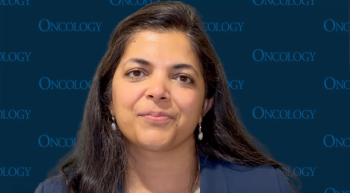
Durvalumab Plus Tremelimumab Combo Provides Significant Survival Benefit in First-Line Unresectable Hepatocellular Carcinoma
Patients with unresectable hepatocellular carcinoma appeared to benefit from treatment with durvalumab and tremelimumab, according to findings from the phase 3 HIMALAYA trial.
The addition of a high priming dose of tremelimumab (CP-675) to durvalumab (Imfinzi) in the first-line setting yielded a statistically significant and clinically meaningful overall survival (OS) benefit compared with sorafenib (Nexavar) in patients with unresectable hepatocellular carcinoma (HCC) who have not been treated with prior systemic therapy and were ineligible for local treatment, according to AstraZeneca.1
The positive high-level findings came from the phase 3 HIMALAYA trial (NCT03298451), which indicated that the experimental regimen met the trial’s primary end point of OS superiority. Additionally, single-agent durvalumab demonstrated noninferiority vs sorafenib, and had a more favorable numerical trend toward OS, and showed an improved safety profile.
“HIMALAYA is the first phase 3 trial to add a novel single priming dose of an anti-CTLA4 antibody to another checkpoint inhibitor, durvalumab. This serves to boost the patient’s own immune system against their liver cancer, aiming to maximize long-term survival with minimal side effects. This is very exciting news for our patients,” Ghassan Abou-Alfa, MD, MBA, an attending physician at Memorial Sloan Kettering Cancer Center and principal investigator on the study, said in a press release.
Data for the combination were recently published from a
Moreover, investigators reported that patients who were treated with either the T300 regimen, single-agent durvalumab, single-agent tremelimumab, or 75 mg of intravenous tremelimumab once every 4 weeks plus durvalumab yielded median progression-free survival data of 2.17 months (95% CI, 1.91-5.42), 2.07 months (95% CI, 1.84-2.83), 2.69 months (95% CI, 1.87-5.29, and 1.87 months (95% CI, 1.77-2.53). Investigators reported corresponding median OS data of 18.73 months (95% CI, 10.78-27.27), 13.57 months (95% CI, 8.74-17.64), 15.11 months (95% CI, 11.33-20.50), and 11.30 months (95% CI, 8.38-14.95) in each respective cohort.
The open-label, multicenter HIMALAYA trial has enrolled a total of 1324 patients who were randomized to receive either a 300 mg priming dose of tremelimumab plus 1500 mg of durvalumab, single-agent durvalumab, or sorafenib.
To be eligible for the trial, patients were required to have HCC based on histopathologic confirmation and have received no prior systemic therapies for their disease. Patients were also required to have a Barcelona Clinic Liver Cancer stage B or C, a Child-Pugh Score class A, and an ECOG performance status of 0 or 1 at enrollment. Those who experienced hepatic encephalopathy within the past 12 months or required medication to prevent or control the condition, had clinically meaningful ascites, experienced main portal vein tumor thrombosis, or demonstrated active gastrointestinal bleeding within 12 months were not eligible for enrollment on the study.
Data from the HIMALAYA trial are set to be presented at an upcoming meeting. Durvalumab and tremelimumab were most recently granted an orphan drug designation for the treatment of HCC in 2020.
“Inhibition of CTLA-4 has shown the ability to drive benefit particularly in the tail of the survival curve in several settings. This is the first time a dual immunotherapy regimen has improved overall survival as a first-line treatment for patients with unresectable liver cancer for whom treatment options are limited and long-term outcomes are poor,” Susan Galbraith, executive vice president of Oncology R&D at AstraZeneca, concluded
References
- Imfinzi plus tremelimumab significantly improved overall survival in HIMALAYA Phase III trial in 1st-line unresectable liver cancer. News release. AstraZeneca. October 15, 2021. Accessed October 15, 2021.
https://bit.ly/3vgpAVB - Kelley RK, Sangro B, Harris W, et al. Safety, efficacy, and pharmacodynamics of tremelimumab plus durvalumab for patients with unresectable hepatocellular carcinoma: randomized expansion of a phase I/II study. J Clin Oncol. 2021;39(27):2991-3001. doi:10.1200/JCO.20.03555
Newsletter
Stay up to date on recent advances in the multidisciplinary approach to cancer.


















































































